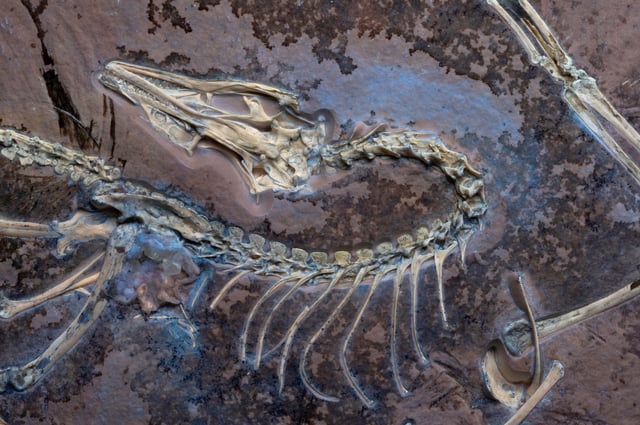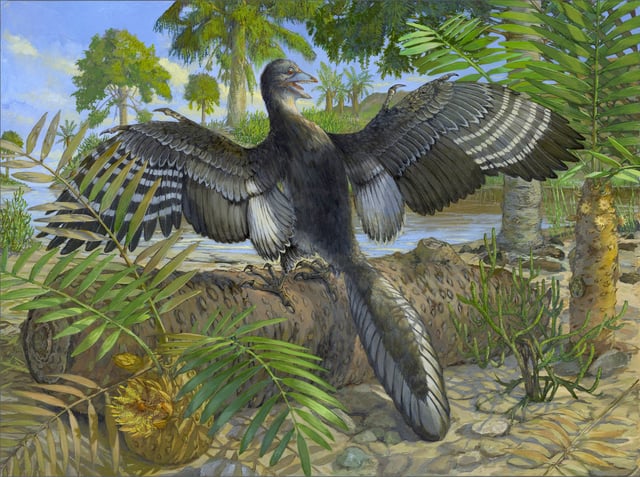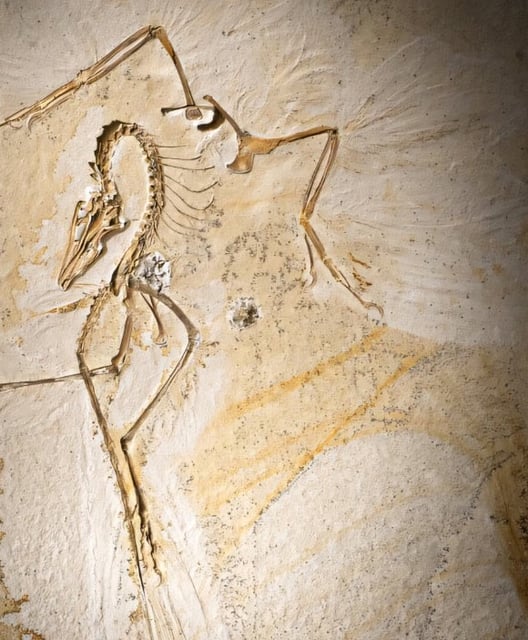Overview
- The Chicago Archaeopteryx, the most complete and best-preserved specimen of its kind, was analyzed using CT scans and UV light to reveal soft tissues and skeletal details.
- For the first time, researchers identified long tertial feathers on Archaeopteryx, confirming it had adaptations for powered flight unlike its non-avian dinosaur relatives.
- Soft tissues in the hands and feet suggest the species spent significant time on the ground and may have been capable of climbing trees.
- Cranial features in the fossil provide evidence for the early evolution of cranial kinesis, a trait that allows modern birds to move their beaks independently of their skulls.
- Acquired by the Field Museum in 2022 after decades in private hands, the fossil is now central to ongoing research into the origins of avian flight and bird evolution.


